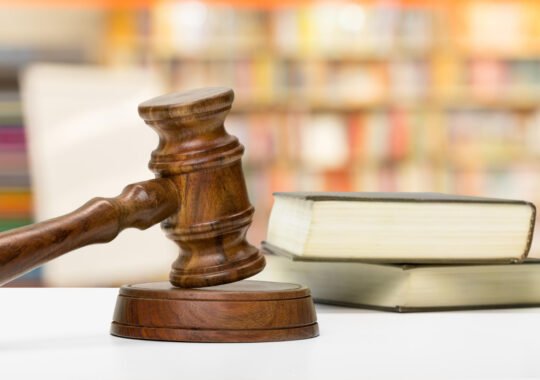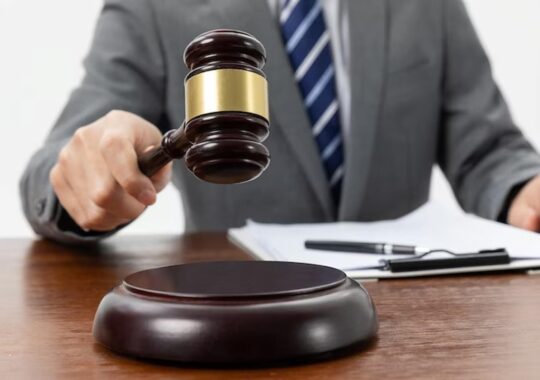After receiving notice of a lawsuit, many employers treat it like an obnoxious odor from which they want to keep a distance. But this thinking is counterproductive. The sooner an employer can assemble a strong defense that protects employees’ rights, the better the odds of successfully navigating employment litigation.
Documentation
The next step is filing a lawsuit when an employee claims to have been discriminated against or retaliated against. Generally, employment lawsuits involve allegations of wrongful termination, sexual harassment, or other claims guided by federal and state laws. A lawyer specializing in employment litigation can help you navigate the legal and administrative requirements you must meet to bring your case. They can also prepare a strong defense against any allegations you may face. Whether a grievance or lawsuit, documentation is critical in the employment litigation section. Proper documentation of workplace events can be necessary for defending against a charge of discrimination, preventing an employer from being found liable for a lawsuit, or making an informed decision about disciplinary actions. A manager or supervisor should always keep documents that support their decisions about discipline or termination. These documents can include performance reviews, warnings, emails, and other communications. These documents must be dated contemporaneously with the incident to be persuasive evidence in court later.
Consultation
The employer and the employee should always consult during the employment litigation process. This helps reduce the risk of a lawsuit and keeps losses to a minimum. Consultation can be done directly with employees or indirectly through their representatives. It can help businesses understand the views of staff and gain their buy-in when making changes at the workplace. In most cases, employers should consult with employees before significant changes to their regular rosters or working hours. This may include a shift in holiday or overtime arrangements, or it might mean deciding to introduce a new pay structure. Discrimination is another common area of employment law and is often a significant reason for an employment dispute to go to trial. This can be discrimination based on race, gender, or other protected classes.
Discovery
During the employment litigation process, the plaintiff and the defendants use discovery to exchange information that is relevant to the case. This often includes written questions in the form of interrogatories and requests for the production of documents, depositions of witnesses, or both. A discovery process is essential in preparing for trial and a successful employment discrimination lawsuit. However, it can also be a source of frustration for both parties. Many employers are concerned about the expense of responding to many discovery requests. This is particularly true for employers with a large volume of electronic data, such as banks and credit card companies.
Therefore, it’s vital to review and respond to all of your discovery requests as soon as possible. If you don’t, the other side will likely object to the request, or you may be forced to file a motion to compel information.
Pretrial Conference
A pretrial conference is essential for both the employee and the employer during the employment litigation process. It is a meeting where the parties, their attorneys, and a judge discuss all of the issues in the case that needs to be addressed before the trial begins. The Judge will want to hear about all of the evidence presented at the trial and whether any pretrial motions need to be ruled on before the test. It is also a good time for the parties to discuss any settlement options that they may have. During the meeting, the attorney for the plaintiff should explain to the Judge any facts or evidence that the plaintiff thinks are essential for the case to have a positive outcome at trial. They must also present any witness testimony they plan to use for the problem. The prosecutor, on the other hand, must provide the defense with all of the evidence that the state plans to use at the trial before the pretrial conference. This can include police reports, lab reports, and other evidence.
Trial
Employment litigation can be filed against employers for various reasons, including discrimination, harassment, pay, scheduling, or overtime violations. It can also involve workplace safety, insurance benefits, and pensions.
While these cases can be complex, they can also result in significant financial compensation. For example, in discrimination cases, employees may seek back wages, future income, and other forms of monetary compensation for lost benefits. As part of the employment litigation process, counsel for both sides must prepare for trial. This means understanding the trial process, identifying key evidence, and developing a strategy that will best position a client to prevail in court. For many clients, this means hiring a firm with a nationwide practice that understands how judges and opposing attorneys in different jurisdictions handle employment litigation. It also involves knowing how to handle disputes to minimize legal risk for a client’s business, especially where the company has operations in several states. In the end, the goal of any trial is to put the plaintiff on a sound footing with the jury and to make them feel that they know the plaintiff. This requires a careful approach that takes into account the individuality of each plaintiff, as well as their motivations for filing the suit.





